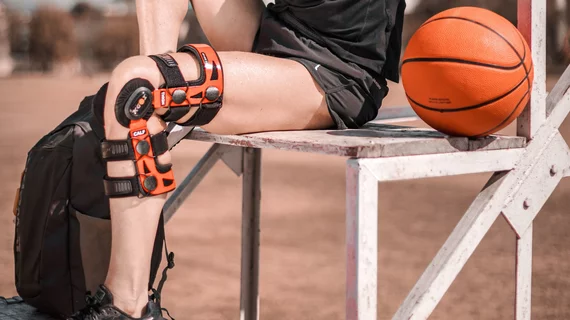Multi-slice knee MRI technique saves time without sacrificing quality
Research published in Clinical Imaging examined multiple multi-slice acceleration settings when performing knee MRIs and found a sweet spot between reducing scan times and maintaining diagnostic quality.
The simultaneous multi-slice (SMS) method works by utilizing multi-slices with a single combined radiofrequency pulse to ultimately obtain a signal. SMS obtains many sections in a shorter time frame by filling multiple k-spaces concurrently. Unlike parallel acquisition techniques, SMS does not result in a loss of k-spaces.
While studies pertaining to this technology are promising, they have thus far neglected to address image artifacts, like zebra lines and residual aliasing.
“The presence of these artifacts was an important factor affecting image quality. Furthermore, as previous studies were mainly conducted with normal volunteers, we could not determine specific methods or protocols for applying SMS technology in routine clinical practice,” corresponding author, Chankue Park, with the Department of Radiology at Pusan National University Yangsan Hospital in South Korea, and co-authors wrote.
To investigate how these artifacts affect diagnostic quality and confidence, the authors compared conventional MRI scans of the knee to scans that applied various SMS settings.
A total of 33 patients who underwent knee MRI were enrolled in the study. Their scans were interpreted retrospectively by two radiologists who compared T1- and T2-weighted conventional images (2-fold parallel acquisition (PAT-2)) along with various SMS settings: SMS-2 (PAT-2 with 2-fold SMS), SMS-3 (PAT-2 w/ 3-fold SMS), and SMS-4 (PAT-2 w/ 4-fold SMS).
Scan times dropped significantly with each SMS application. Only the T2-weighted SMS images showed zebra artifacts, but the experts observed increased artifacts (zebra and residual aliasing) with increased SMS application. SMS-2 and SMS-3 images both showed good diagnostic quality, but the SMS-4 images saw a decrease in reader confidence.
“Assessment of diagnostic confidence for internal derangement of the knee suggested that lesions could be confidently confirmed at SMS-2 and SMS-3,” the authors wrote. “Therefore, if the possibility of zebra artifacts and aliasing artifacts on SMS images is recognized, SMS-3 may be fully applicable for clinical diagnosis.”
You can view the detailed results of the study in Clinical Imaging.

